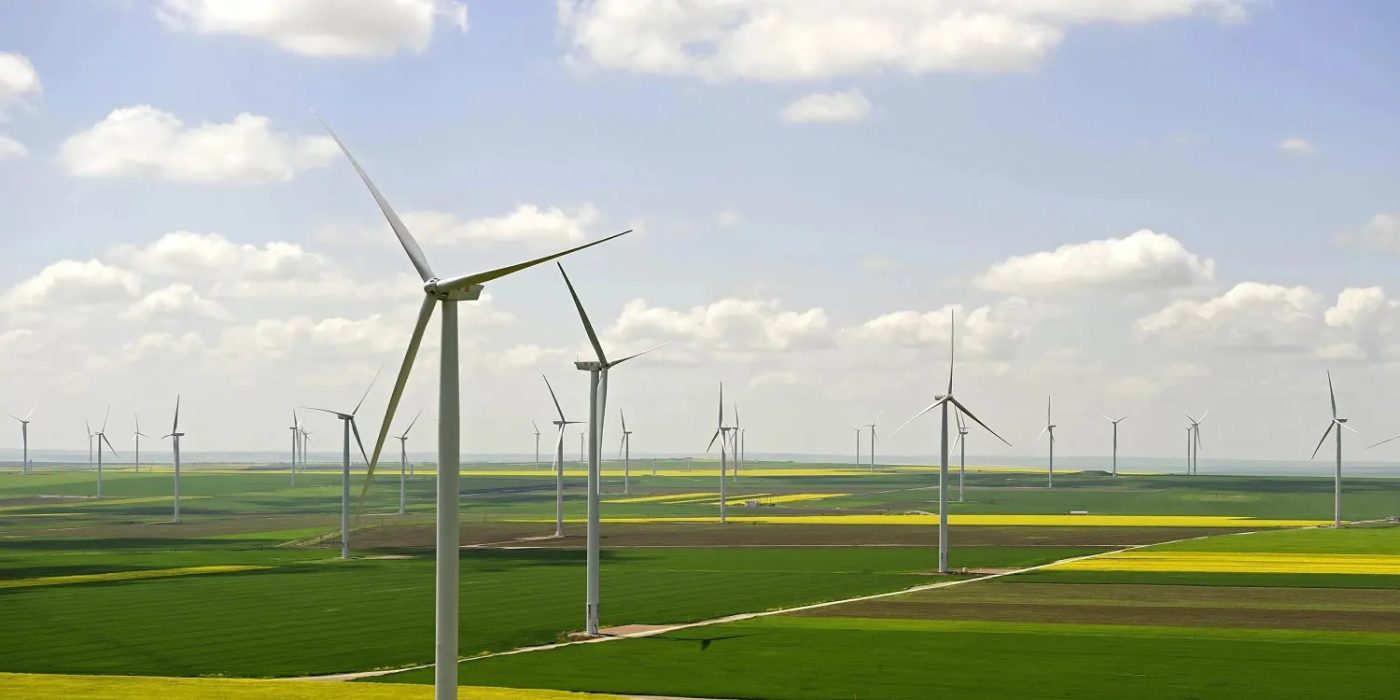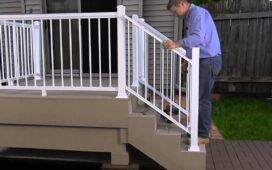Solution 1: Soundproofing Techniques for Wind Farm Substations
1.1 Harnessing Acoustic Insulation Materials
Noise pollution is a major concern in wind farm substations. One effective solution is to use acoustic insulation materials to minimize noise transmission. Acoustic insulation materials are specifically designed to absorb and dampen sound waves, reducing the noise levels in the surrounding area.
The science behind acoustic insulation materials
Acoustic insulation materials work by absorbing sound waves and preventing their transmission. These materials are made using a combination of porous materials and barriers that effectively capture and dissipate sound energy. The porous materials, such as mineral wool or foam, absorb the sound waves, while the barriers reflect and scatter the sound, preventing it from transmitting to the other side.
Exploring the most effective insulation materials available
There are various types of acoustic insulation materials available, each with its own unique properties and applications. Some commonly used materials include mineral wool, fiberglass, cellulose, and foam. These materials have different densities, absorption coefficients, and fire-resistant properties, making them suitable for different noise control requirements.
Tips for proper installation and maintenance of insulation materials
Proper installation and maintenance of acoustic insulation materials are essential for their effectiveness. To ensure maximum noise reduction, it is crucial to install the materials correctly, covering all potential noise sources and pathways. Regular inspection and maintenance should also be conducted to identify any damages or wear and tear and address them promptly to maintain the integrity of the insulation.
1.2 Soundproof Construction Designs for Substation Buildings
In addition to utilizing acoustic insulation materials, soundproof construction designs play a critical role in minimizing noise in wind farm substations. These designs involve incorporating various architectural elements that isolate and block sound.
Key elements of soundproof construction
Soundproof construction involves several key elements, including double-wall construction, soundproof windows and doors, and floating floors. Double-wall construction creates an additional barrier between the noise source and the surrounding area, minimizing sound transmission. Soundproof windows and doors are specifically designed to reduce sound penetration, incorporating multiple layers of glass and soundproofing materials. Floating floors, which are isolated from the main structure, prevent vibrations and impact noise from traveling through the building.
Innovative architectural designs for noise control
Architects and designers are constantly developing innovative solutions to enhance noise control in wind farm substations. New building designs may incorporate features such as inclined walls, angled roofs, or green roofs, all of which can help deflect and absorb sound. Additionally, the use of materials with sound-absorbing properties, such as perforated metal panels or sound-absorbing panels, can be integrated into the building design to further reduce noise levels.
Best practices for incorporating soundproofing into substations
When incorporating wind farm substation noise control solutions, it is essential to consider the specific noise sources and their characteristics. Conducting a thorough noise assessment can help identify the areas that require additional soundproofing measures. Effective implementation of soundproofing techniques may involve a combination of acoustic insulation, soundproof construction designs, and the strategic placement of noise barriers.
1.3 Utilizing Noise Barriers to Contain Sound Waves
Noise barriers are effective solutions for containing and reducing the propagation of sound waves in wind farm substations. They act as physical barriers that block or redirect the noise, preventing it from reaching sensitive areas.
Introduction to noise barriers for wind farm substations
Noise barriers are typically constructed using materials with sound-dampening properties, such as concrete, wood, or metal. These barriers are strategically placed around the noise source to intercept and absorb or reflect the sound waves. By interrupting the direct path of the sound waves, noise barriers help reduce the overall noise levels in the surrounding areas.
Different types of noise barriers and their efficiency
There are various types of noise barriers available, each with its own efficiency in reducing noise levels. Common types include reflective barriers, absorptive barriers, and combination barriers. Reflective barriers are solid structures that reflect sound waves away from the receiver, effectively blocking the noise. Absorptive barriers, on the other hand, absorb the sound waves, converting them into heat energy. Combination barriers combine both reflective and absorptive properties to provide enhanced noise reduction.
Choosing the right noise barriers for specific noise sources
When selecting noise barriers for wind farm substations, it is important to consider the specific noise sources and their characteristics. For example, if the noise is mainly low-frequency, absorptive barriers may be more effective in reducing the noise levels. However, for high-frequency noises, reflective barriers may be more suitable. A combination of barriers may be necessary to address different frequency ranges and provide optimal noise reduction.
Solution 2: Advanced Equipment and Technology for Noise Control
2.1 Cutting-Edge Noise Reduction Systems
Cutting-edge noise reduction systems offer advanced technologies to effectively control and minimize noise in wind farm substations. These systems employ innovative techniques to actively reduce noise levels.
An overview of advanced noise reduction technologies
Advanced noise reduction technologies utilize various methods to actively reduce noise levels. Adapting noise cancellation technology, these systems use microphones to detect the incoming noise and generate anti-noise sound waves to cancel out the original noise. Active noise control systems, such as active noise control helmets, can also be employed to create a quieter environment in specific locations.
Exploring real-world applications of cutting-edge systems
Cutting-edge noise reduction systems have found applications across different industries, including wind farm substations. For example, active noise control systems can be used to reduce the noise levels generated by large transformers or cooling fans. These systems can effectively reduce noise pollution and create a more pleasant working environment for substation operators.
Considerations when implementing advanced noise reduction systems
Implementing advanced noise reduction systems requires careful consideration of several factors. These include the specific noise sources, the environment, and the cost-effectiveness of the technologies. It is also essential to ensure proper installation and regular maintenance of the systems to maximize their effectiveness in controlling noise levels.
2.2 Optimizing Electrical Transformers for Reduced Noise
Electrical transformers are known to generate significant noise levels in wind farm substations. Implementing techniques to optimize transformer design and operation can effectively reduce noise emissions.
The relationship between transformers and noise generation
Transformers produce noise due to the magnetic fields created during their operation. The core and windings of the transformer vibrate as a result of electromagnetic forces, resulting in audible noise. The noise levels are influenced by factors such as transformer design, core material, winding construction, and cooling mechanisms.
Modifications and upgrades to minimize noise from transformers
To minimize noise from transformers, various modifications and upgrades can be implemented. These include using low-noise transformers that are specifically designed to reduce vibrations and noise emissions. Additionally, improvements in transformer core design, such as using amorphous metal cores or adding vibration-damping materials, can significantly reduce noise levels.
Benefits and drawbacks of different transformer noise reduction techniques
Different transformer noise reduction techniques have their own benefits and drawbacks. Low-noise transformers offer a straightforward solution by addressing noise at the source. However, they may come with a higher cost compared to traditional transformers. Other techniques, such as adding vibration-damping materials, may require retrofitting existing transformers, which can increase their overall cost. It is important to assess the specific requirements and constraints of the wind farm substation when considering transformer noise reduction techniques.
2.3 The Role of Vibration Dampening in Wind Farm Substations
Vibrations can contribute to the overall noise levels in wind farm substations. Implementing vibration dampening techniques is essential to effectively control noise emissions.
Understanding the impact of vibrations on noise levels
Vibrations caused by operational machinery and equipment can generate noise in wind farm substations. These vibrations travel through the structure, amplifying the noise levels. By reducing vibrations, the overall noise levels can be significantly reduced.
Techniques for mitigating vibrations in substations
There are several techniques for mitigating vibrations in wind farm substations. These include isolation mounts, vibration-damping materials, and structural modifications. Isolation mounts are used to separate vibrating machinery from the structure, minimizing the transmission of vibrations. Vibration-damping materials, such as rubber pads or viscoelastic materials, can be used to absorb vibrations and reduce their propagation. Structural modifications, such as stiffening elements or reinforced supports, can also help minimize vibrations.
The importance of regular maintenance and monitoring of vibration dampening systems
To ensure the effectiveness of vibration dampening systems, regular maintenance and monitoring are crucial. Proper inspection and maintenance of isolation mounts, dampening materials, and structural modifications are necessary to identify any wear and tear or degradation. Regular monitoring of vibrations can help detect any changes in the vibration levels and allow for timely adjustments or repairs to maintain optimal noise control.
Solution 3: Best Practices for Operational Noise Control
3.1 Efficient Equipment Placement and Layout Planning
The placement and layout planning of equipment in wind farm substations play a significant role in minimizing noise propagation. Proper positioning of noisy equipment can help reduce the overall noise levels in the surrounding areas.
Optimal positioning of noisy equipment to minimize sound propagation
When designing the layout of wind farm substations, it is important to consider the placement of noisy equipment. Placing noisy equipment away from sensitive areas, such as residential areas or occupied buildings, can help reduce the impact of noise pollution. Additionally, strategic placement of barriers or soundproof enclosures around noisy equipment can further minimize sound propagation.
Considerations when designing the layout of wind farm substations
Designing the layout of wind farm substations requires careful consideration of multiple factors. These include the proximity of noise-sensitive areas, the configuration of equipment, access and maintenance requirements, and safety regulations. A well-designed layout can effectively minimize the potential noise impact on the surrounding environment.
Maximizing the distance between noise sources and sensitive areas
The distance between noise sources and sensitive areas is a critical factor in reducing noise impact. Maximizing the distance between noisy equipment and noise-sensitive areas, such as residential buildings or recreational areas, can significantly minimize the impact of noise pollution. Noise propagation decreases with distance, allowing for quieter environments in the surrounding areas.
3.2 Implementing Effective Noise Monitoring and Control Programs
Regular noise monitoring and control programs are crucial for managing and mitigating noise in wind farm substations. These programs help identify noise sources, assess noise levels, and implement appropriate control measures.
The importance of regular noise monitoring in wind farm substations
Regular noise monitoring provides valuable data on the noise levels in wind farm substations. It helps identify specific noise sources and assess their impact on the surrounding environment. Continuous noise monitoring allows for the early detection of any changes or deviations from acceptable noise levels, enabling prompt actions to address potential issues.
Setting up a comprehensive noise control program
A comprehensive noise control program involves establishing protocols and procedures for noise monitoring, assessment, and control. This includes defining acceptable noise levels, implementing regular noise measurements, and conducting assessments to identify noise sources and their characteristics. The program should also outline the steps to be taken in case of non-compliance with noise regulations or the identification of excessive noise levels.
Utilizing advanced monitoring technology for real-time noise control
Advancements in technology have made real-time noise monitoring and control more accessible. Automatic noise monitoring systems can provide continuous noise level measurements and send alerts in case of significant deviations. These systems can also be integrated into the overall control system of the wind farm substation, allowing for real-time adjustments and control of noise levels.
3.3 Engaging with Stakeholders for Successful Noise Mitigation
Engaging with stakeholders, including wind farm owners and nearby communities, is paramount to successful noise mitigation in wind farm substations. Collaboration and communication help address concerns and foster understanding between all parties involved.
Building effective communication channels between wind farm owners and nearby communities
Open and transparent communication between wind farm owners and nearby communities is essential for successful noise mitigation. This includes sharing information about noise control measures, providing updates on noise reduction efforts, and addressing any concerns or complaints from the community. Regular communication can foster trust and collaboration, enabling the development of mutually beneficial solutions.
Addressing noise concerns through community engagement and collaboration
Engaging with the local community allows for a better understanding of their concerns and specific needs. Holding community meetings, workshops, or open forums can provide a platform to address noise-related issues, answer questions, and gather feedback. Collaborative approaches, such as joint research projects or the establishment of community advisory groups, can also help develop effective noise mitigation strategies that cater to the local context.
The role of education and awareness in minimizing noise-related conflicts
Education and awareness play a crucial role in minimizing conflicts related to noise in wind farm substations. By providing information about the benefits of wind energy and the efforts taken to control noise, stakeholders can gain a better understanding of the challenges faced by wind farm operators. Public awareness campaigns, educational materials, and site visits can help foster a positive attitude towards wind farm developments and reduce potential conflicts related to noise.
Solution 4: Regulatory Compliance and Industry Standards
4.1 Understanding Noise Regulations for Wind Farm Substations
Complying with noise regulations is of utmost importance for wind farm substations. Understanding the applicable regulations and measurement standards is essential for ensuring compliance and avoiding potential penalties and legal issues.
An overview of noise regulations specific to wind farm substations
Noise regulations specific to wind farm substations may vary based on the jurisdiction and local requirements. These regulations typically set limits on the acceptable noise levels in designated areas, such as residential zones or sensitive habitats. They may also outline the necessary permits and approvals required for the operation of wind farm substations.
Compliance requirements and measurement standards
Compliance with noise regulations requires careful adherence to specific requirements and measurement standards. These may include conducting noise impact assessments, measuring noise levels using approved methods and equipment, and submitting regular reports to the relevant authorities. Compliance requirements may also extend to the operation and maintenance of noise control measures.
Navigating the complexities of noise permitting processes
The noise permitting process for wind farm substations can involve various complexities. It may require the submission of detailed noise impact assessments, technical specifications, and supporting documentation. Navigating the permitting process often involves engaging with regulatory agencies, addressing their concerns, and providing the necessary information to demonstrate compliance with the applicable noise regulations.
4.2 Noise Impact Assessment and Prediction Techniques
Noise impact assessments and prediction techniques are important tools for evaluating the potential noise levels of wind farm substations and ensuring compliance with regulations.
The importance of conducting noise impact assessments
Noise impact assessments provide a comprehensive understanding of the potential noise impact of wind farm substations on the surrounding environment. These assessments involve evaluating the existing noise levels, predicting the future noise levels based on the proposed project, and identifying potential mitigation measures to achieve compliance with noise regulations. Noise impact assessments play a crucial role in the planning and design phase of wind farm substations.
Predictive models and simulations for estimating noise levels
Predictive models and simulations are commonly used to estimate noise levels in wind farm substations. These models take into account various factors such as the distance from noise sources, the characteristics of the equipment, the topography of the area, and the background noise levels. By inputting these parameters into the models, engineers and environmental consultants can estimate the potential noise levels and identify areas that may require additional noise control measures.
Technical considerations and data collection methods for accurate assessments
Accurate noise impact assessments require careful consideration of technical factors and appropriate data collection methods. This includes using precise noise measuring equipment, considering meteorological conditions, and ensuring that the data collected is representative of the actual operating conditions of the wind farm substation. Following standardized measurement protocols and using verified data collection methods are essential for accurate assessments.
4.3 Continuous Improvement in Noise Control Strategies
Noise control strategies for wind farm substations should continuously evolve and improve to meet changing technologies, industry best practices, and regulatory requirements.
Reviewing and evaluating the effectiveness of noise control measures
Regular review and evaluation of noise control measures are crucial to identify their effectiveness and areas for improvement. This involves assessing the noise levels, monitoring regulatory compliance, and gathering feedback from stakeholders. By understanding the strengths and weaknesses of existing noise control measures, wind farm operators can make informed decisions on implementing new technologies or modifying existing strategies to achieve better noise control.
Adapting strategies to evolving technology and industry best practices
The field of noise control is continually evolving with advancements in technology and industry best practices. Wind farm operators should stay up-to-date with the latest developments and explore innovative solutions to enhance noise control. This could involve implementing new noise reduction technologies, adopting best practices from other industries, or collaborating with experts in the field of acoustics and noise control.
Continuous improvement as a key factor in maintaining regulatory compliance
Continuous improvement in noise control strategies is critical for maintaining regulatory compliance. By actively seeking opportunities for improvement, wind farm operators can ensure that their noise control measures meet or exceed the requirements set by regulatory authorities. This not only helps maintain a positive relationship with regulatory agencies but also demonstrates a commitment to environmental stewardship and responsible wind energy operations.
FAQ
Question: What are some effective solutions for noise control in wind farm substations? Answer: Effective solutions for noise control in wind farm substations include soundproofing techniques, construction designs, noise barriers, advanced equipment and technology, efficient equipment placement, and noise monitoring.
Question: How do acoustic insulation materials work to reduce noise transmission? Answer: Acoustic insulation materials absorb sound waves and prevent their transmission by using a combination of porous materials and barriers that capture and dissipate sound energy.
Question: What are some commonly used materials for acoustic insulation? Answer: Commonly used acoustic insulation materials include mineral wool, fiberglass, cellulose, and foam, each with their own unique properties and applications.
Question: What are some key elements of soundproof construction designs? Answer: Soundproof construction designs involve elements such as double-wall construction, soundproof windows and doors, and floating floors to isolate and block sound.
Question: How do noise barriers work to contain sound waves? Answer: Noise barriers are physical barriers strategically placed around the noise source to intercept and absorb or reflect sound waves, reducing noise levels.
Question: What are some cutting-edge noise reduction technologies? Answer: Cutting-edge noise reduction systems utilize techniques such as noise cancellation and active noise control to actively reduce noise levels.
Question: How can transformer design and operation be optimized to minimize noise emissions? Answer: Transformer design and operation can be optimized through the use of low-noise transformers, improvements in core design, and the addition of vibration-damping materials.
Question: What techniques can be used to dampen vibrations in wind farm substations? Answer: Techniques such as isolation mounts, vibration-damping materials, and structural modifications can be used to dampen vibrations and reduce noise caused by vibrations.







